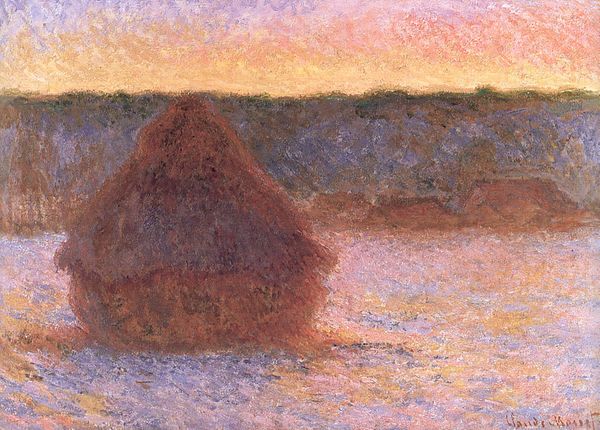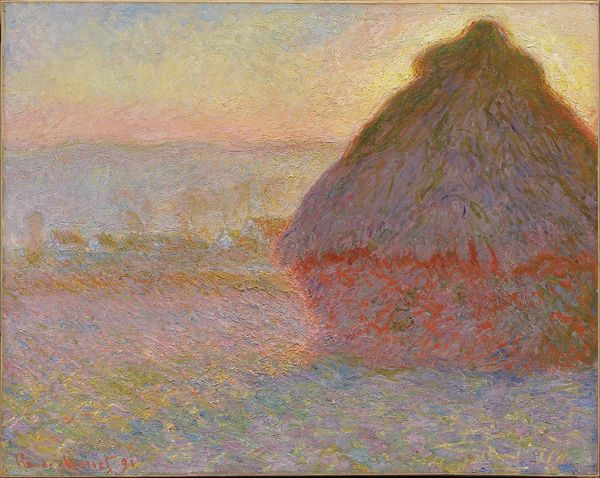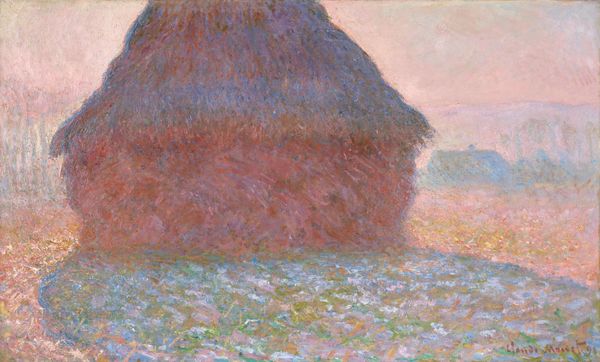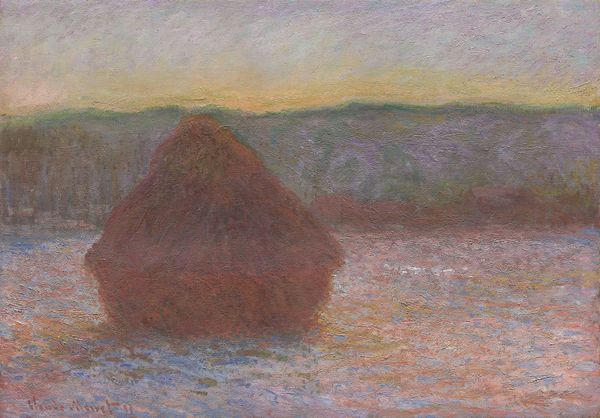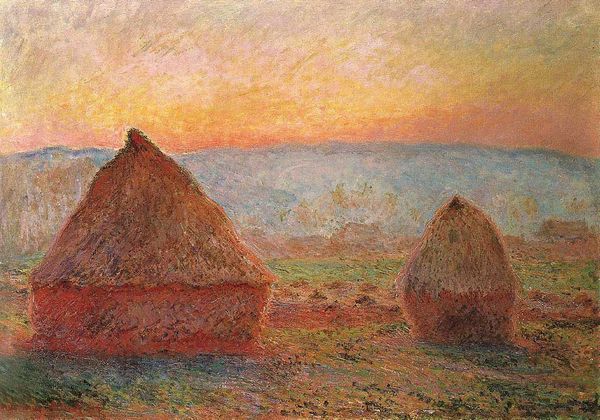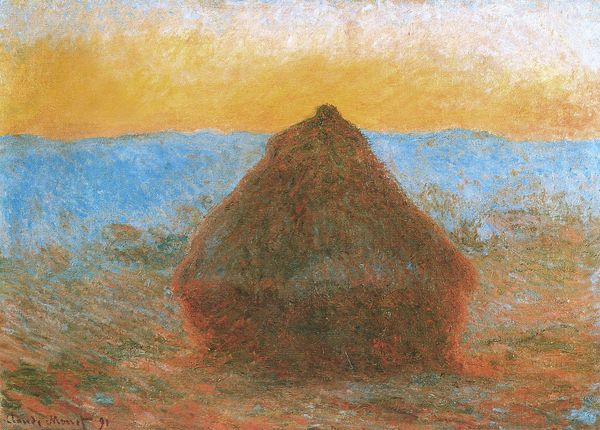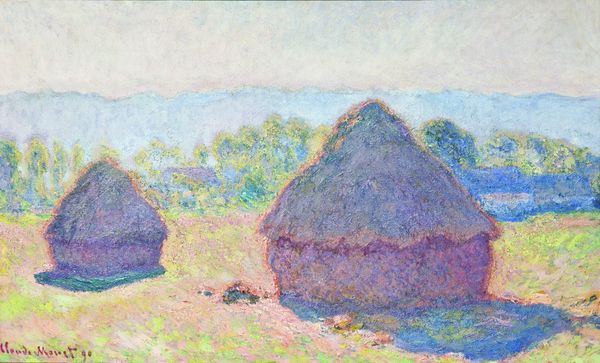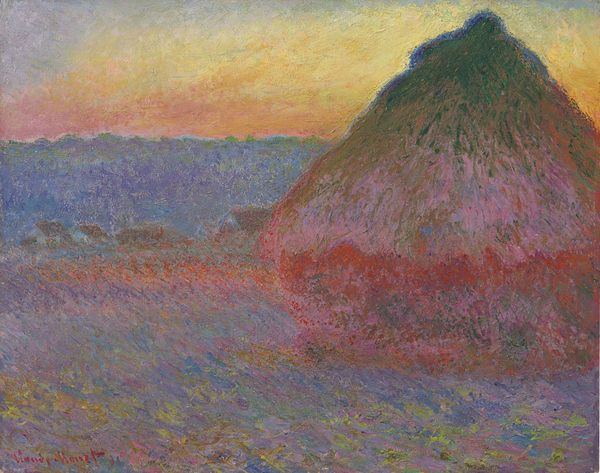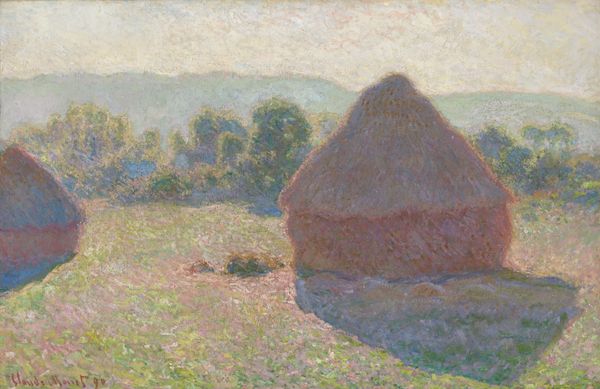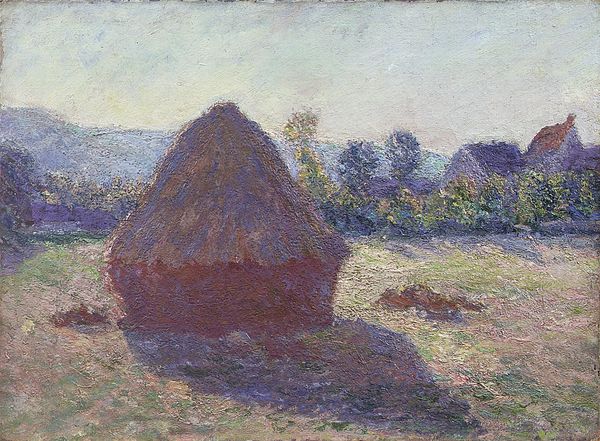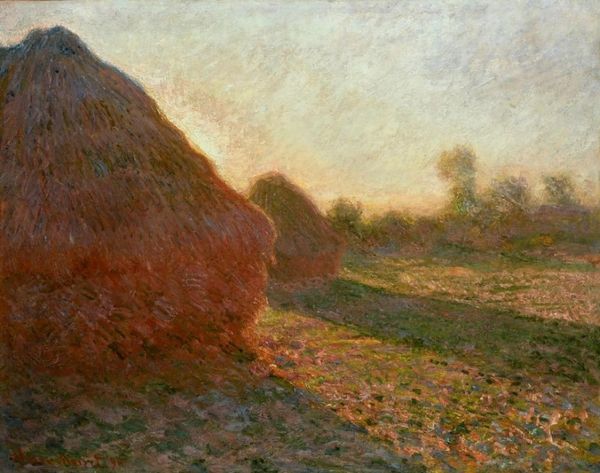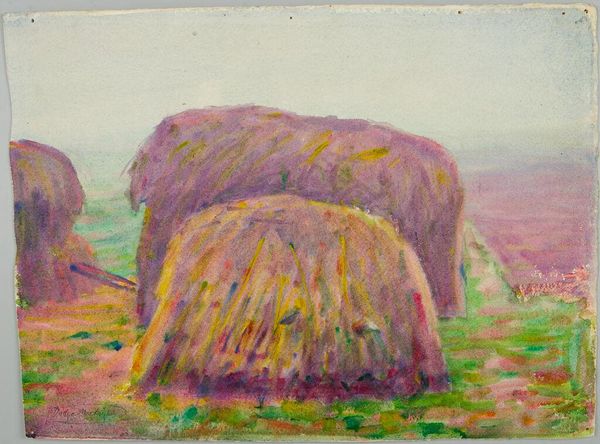
plein-air, oil-paint, impasto
#
plein-air
#
oil-paint
#
landscape
#
oil painting
#
impasto
#
post-impressionism
#
realism
Copyright: Public domain
Editor: Here we have "The Haystack" by Willy Schlobach, created using oil paint in a plein-air style. The scene has a very quiet, dreamlike quality, I think mostly due to the cool blues and purples. What strikes you when you look at it? Curator: I'm immediately drawn to the socio-political implications of depicting such a rural, agrarian scene. Consider when and where Schlobach was painting; this image represents the labor, often unseen and undervalued, that underpins society. This haystack, elevated and monumentalized, becomes a silent monument to those workers. How does the absence of human figures affect your reading of the painting? Editor: That's a great point, it does seem like the landscape is standing in for the people who aren’t present. There’s a real sense of loneliness, despite it being a landscape. It is a realistic scene though. Curator: I see the "realism" more as an aesthetic choice rooted in social commentary. By rendering the mundane with such care, Schlobach elevates the lives and labor of those connected to it, and insists we acknowledge the politics inherent in the land itself. Does this make you rethink the use of light and color? Editor: Definitely. It’s not just a pretty picture then. I appreciate how your interpretation reframes a seemingly simple landscape as a statement about labor and value. It makes me wonder about all the unseen stories behind similar artworks. Curator: Precisely! Engaging with art isn't just about aesthetics, it is a dialogue with history and the present. We uncover layers of meaning about ourselves, the artwork, and the times we inhabit.
Comments
No comments
Be the first to comment and join the conversation on the ultimate creative platform.
